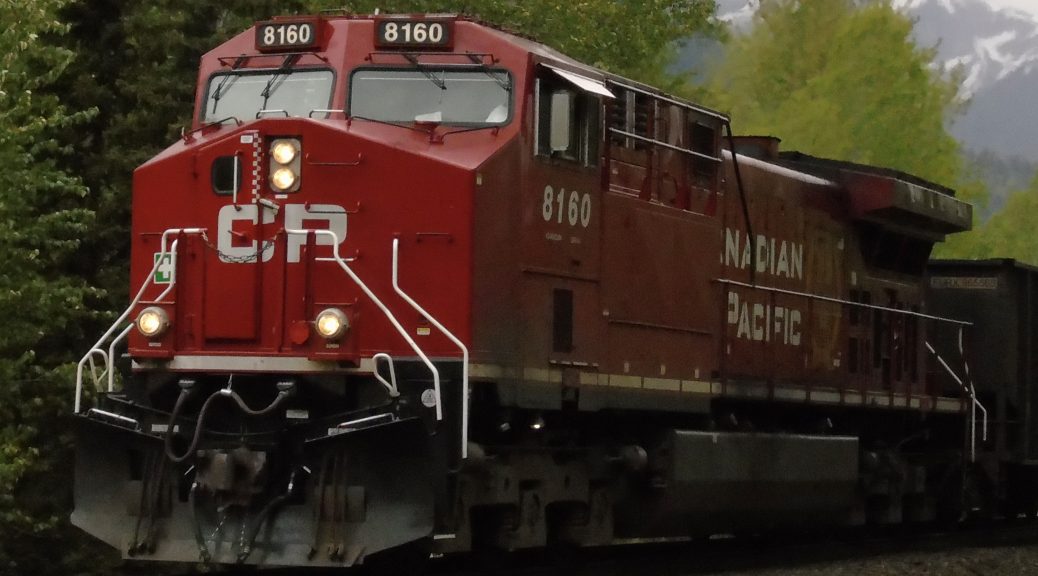
Hunting the Biggest Beasts in the Foggy Mountains
Approximately 95 km across the Kootenay valley from Fernie B.C., the early morning lovers of Cranbrook are finishing their breakfasts while the construction workers take a short drag from their cigarettes during their first break of the day. When abruptly, they all faintly hear a groan like that of baldy aged hardwood, suffering under their feet. Meanwhile, in Fernie, 6,000 people notice yet another raincloud passing over their town for about the 14th day in a row; blocking vitamin D, bringing moisture to the trails, and obscuring the mountains. I was 1 of the 6,000.
It was a frustrating week for photography, and I had promised a photo of a large animal for this week’s blog. The rain throughout the week kept most of the animals bedded down but didn’t stop me from exploring. My idea with capturing larger animals was that I could focus on large portrait photos, which I have learned are a lot more fun (and easier) than taking landscape photos. A large portrait photo would allow me to focus on creating depth with shadow. I thought with the rain that Mount Fernie Provincial Park would be the best possible spot for finding any wildfire due to the density of the forest. Unfortunately, I found nothing of great interest.

The next day, I decided that if I cannot find an animal in the wild, I’ll just have to settle for the giant snake on the tracks. Like anywhere, trains only go through Fernie when their presence would most inconvenience you. However, after unsuccessfully searching for a reported moose in James White Park, I camped out by some train tracks in the early afternoon and was greeted with a faint whistle. My luck had surpassed me because I hadn’t even gotten the camera out by the time the train rounded the bend and came into view. After a joyful panic, I tried to set up a good position to get a photo with the mountains in the background, but I hadn’t anticipated the brightness of the lights on the train.
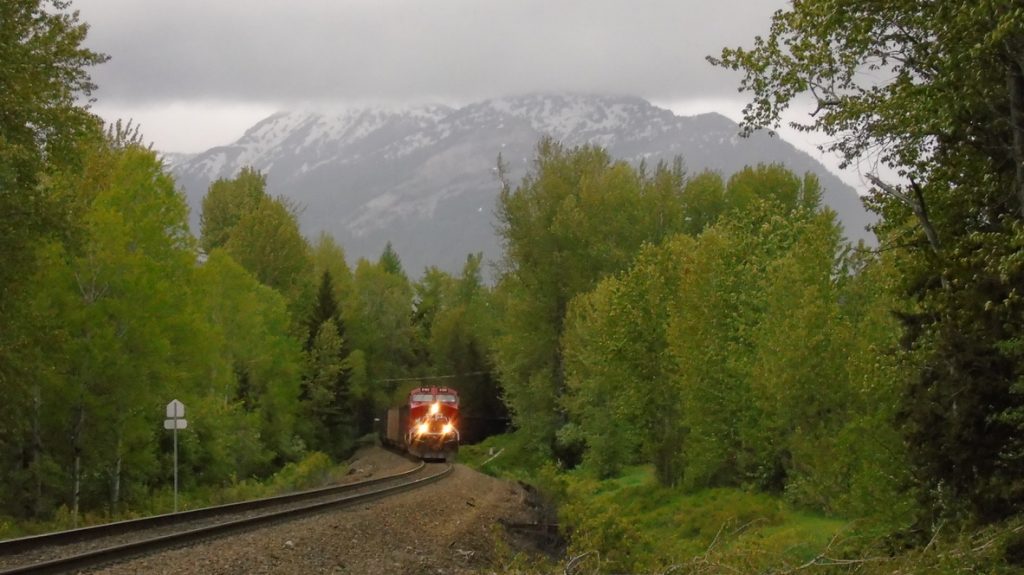
I was, however, able to adjust my settings in time to get a good photo of the train just as it passed me.
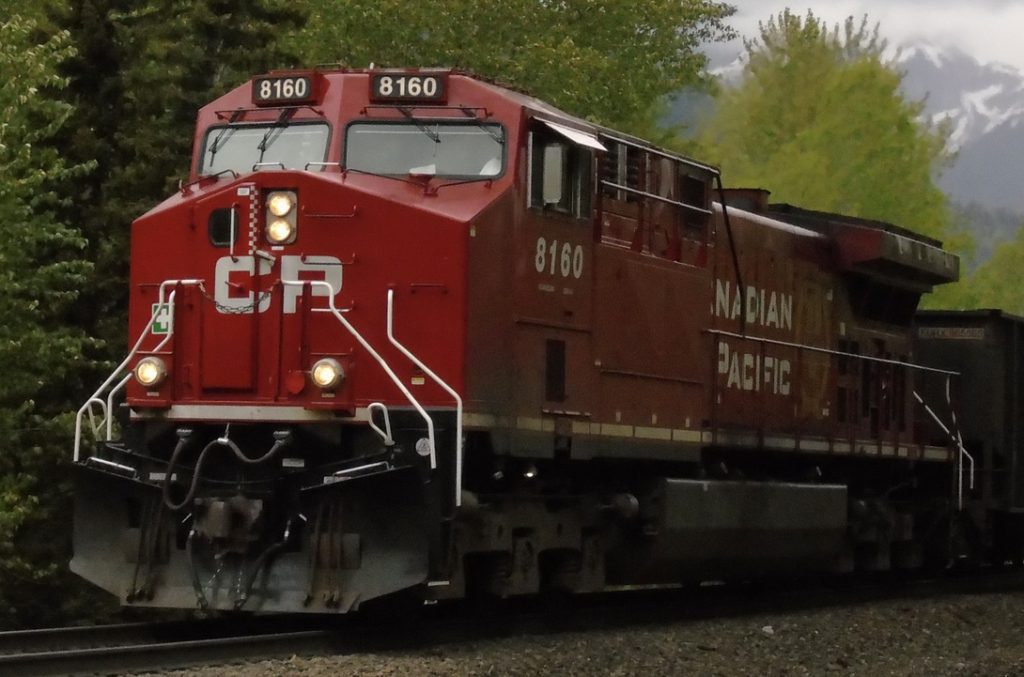
As the train passed by, I had the opportunity to recreate the first shot I had wanted to get, but by that time, I had overcompensated my settings for the brightness of the lights and ruined the photo.
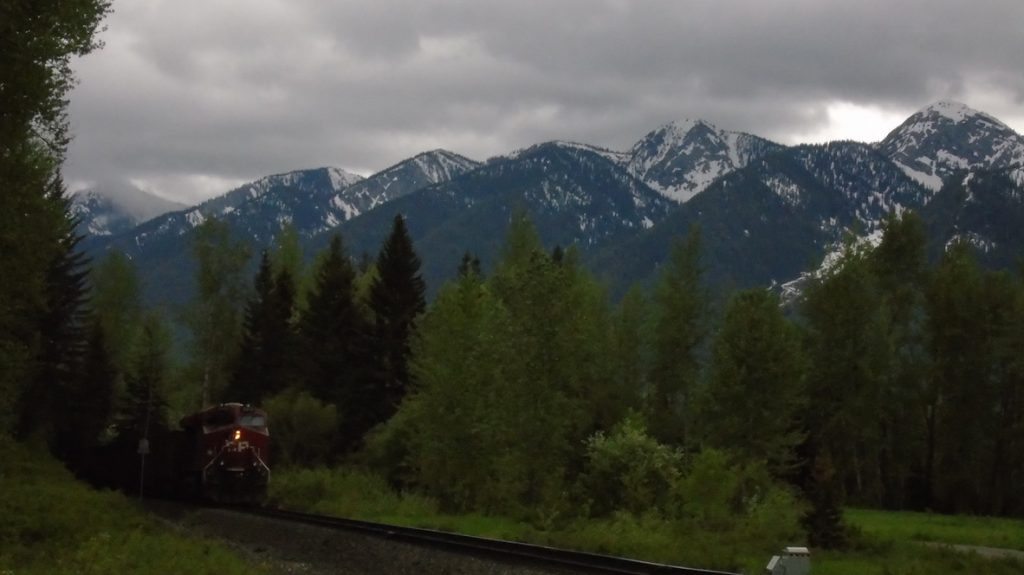
While biking home, my luck reared its head again as I stumbled upon the moose I had been warned about earlier. There were reports of a cow and two calves in the area I was biking but I only saw the cow. Moose are notorious in Fernie for being aggressive by charging at hikers and bikers when they get too close. As the moose popped in and out of the bush, I kept my distance, tried to remain steady, and focused on creating a dark atmosphere with the moose as the focus. For the shots below, I knew I wanted a high aperture to create focus on the moose so I set it at around F7.0 for the close-up shots. Also, it was already slightly dark outside due to an overcast so I didn’t want to max out my shutter speed but rather just below max, around 1500. The first photo has the slowest shutter speed at 800 which is why it is the brightest, I tried to adjust from that point on but it was difficult with how the moose was staying in the bush.
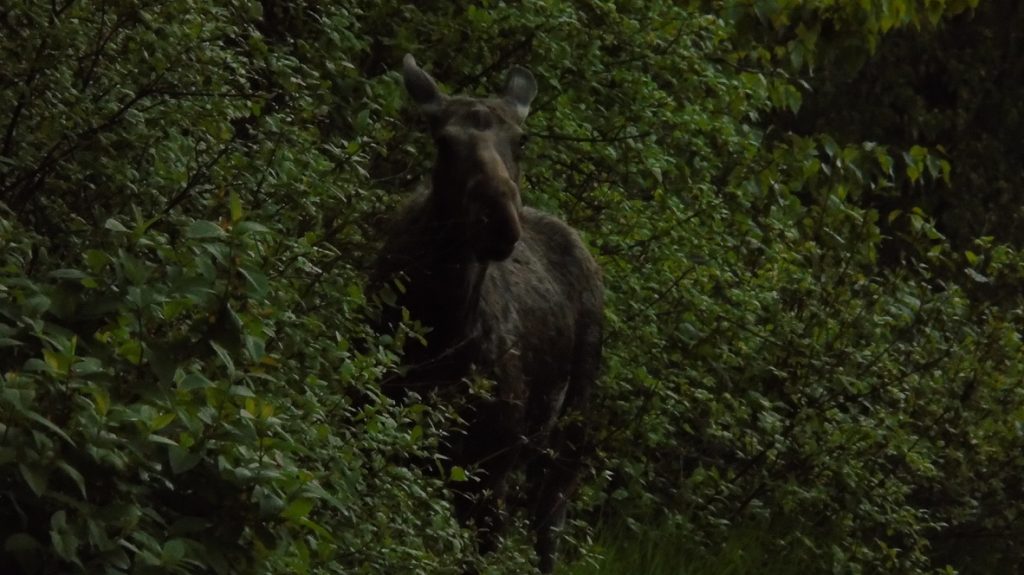
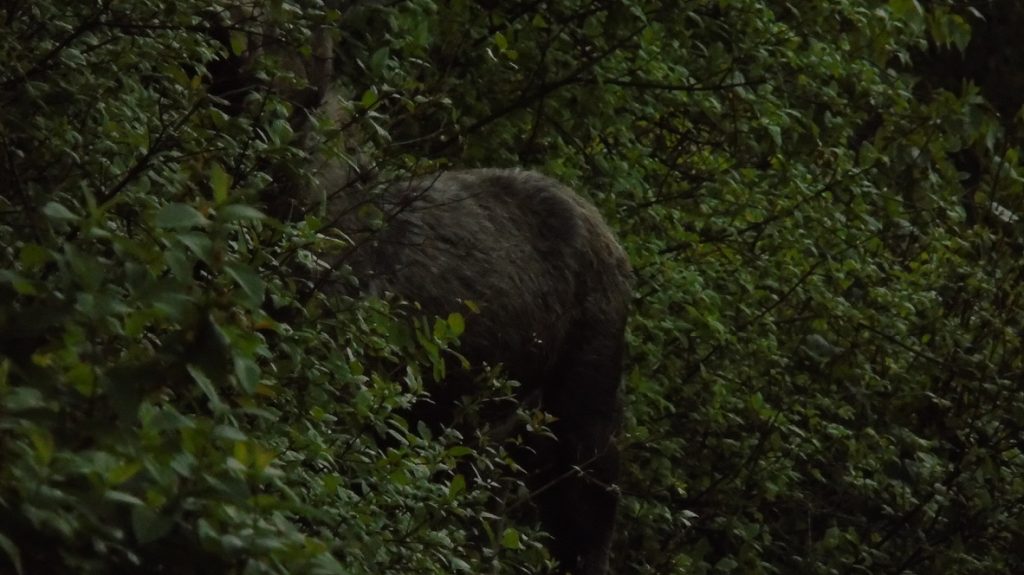
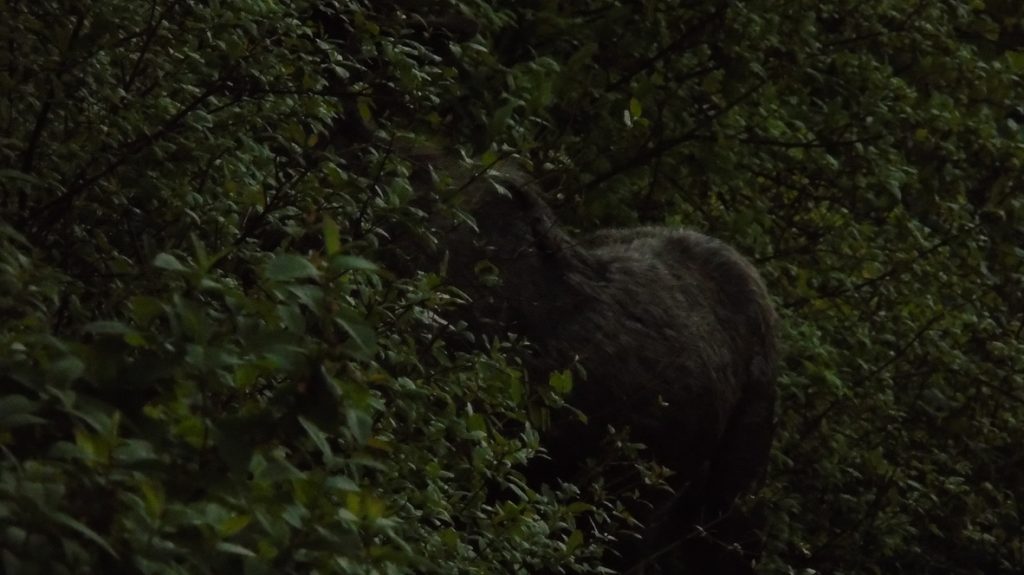
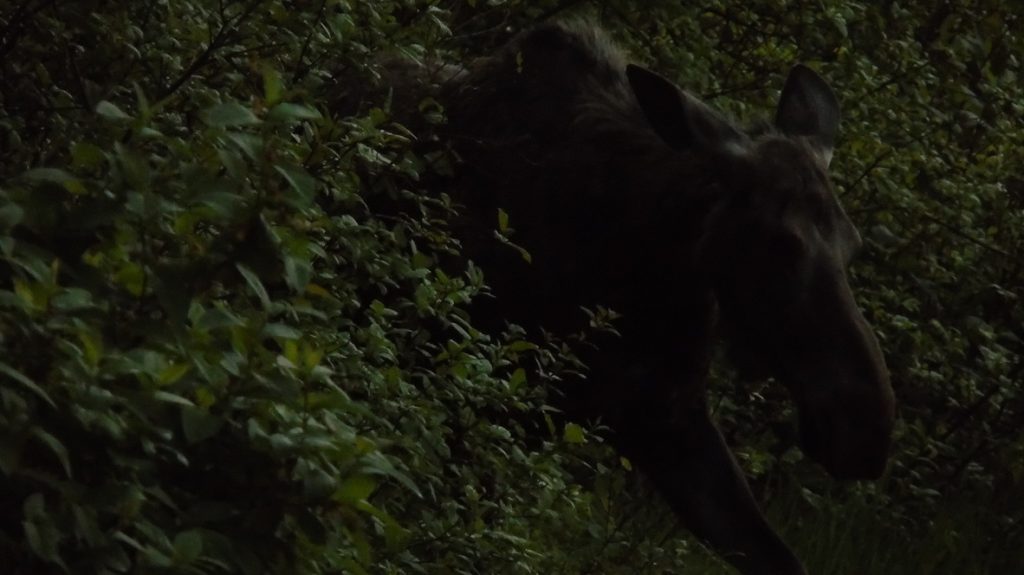
The only exception to the portrait shots was one wide shot photo where I wanted to incorporate the background scenery as well where I lowered the aperture to F4.6 and raised the shutter speed to 2000 (max).
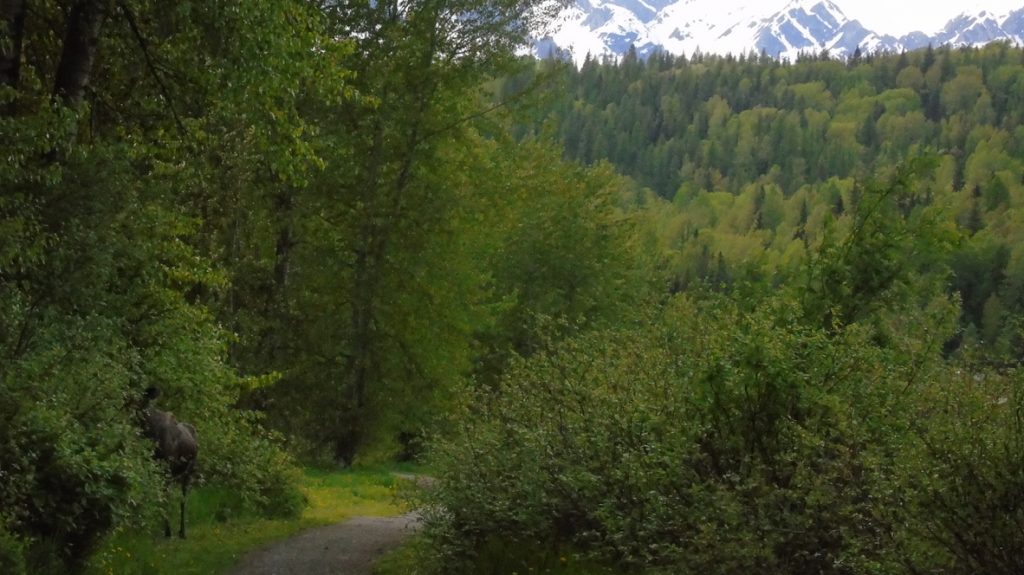
What this photography experience taught me is to invest in a tripod. A tripod will clean up any blurriness in the photos I take and will allow me to set up more precise shots. For next week, I hope to get a good tripod to see what I can create with stability. A stable position should hopefully allow me to try out some night shots of the mountain sky, so be on the lookout.
4 thoughts on “Hunting the Biggest Beasts in the Foggy Mountains”
Hello Chayce! Your photography skills are very good! I am jealous of you that you always have such beautiful scenery around you. I work out at the farm and here in Saskatchewan there is lots of sunrises, sunsets and nature to admire. I can usually capture with my phone but sometimes it just doesn’t do it justice. What kind of camera do you have? Did you get it for this assignment or did you have one before?
Hi Liam,
I can’t wait to capture some Saskatchewan skies when I return in the fall. I use a Sony Cybershot camera that my family has had for a while, but no one learned how to use. I wanted to learn photography for a while, so this was just the perfect excuse.
Hello Chayce, I love each picture here. You have done a fantastic job! The clicks are beautiful. What kind of camera did you use for this photography? Is it DSLR?
Hi Myra,
Thank you! I use a Sony Cybershot camera that my family has had for a while. Unfortunately, it is not a DSLR, but with how much I’ve enjoyed taking pictures, I just might invest in one real soon.